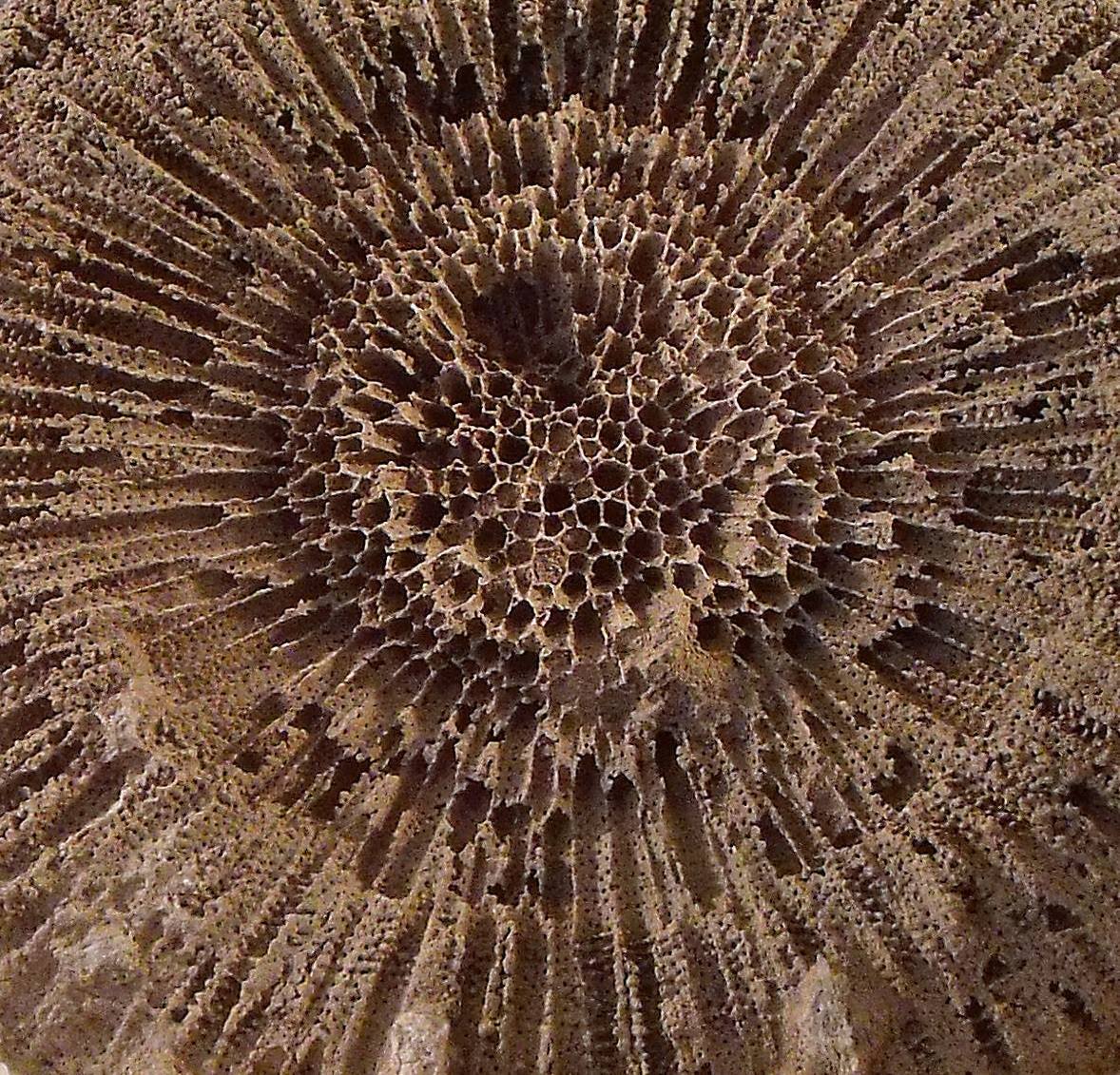Down the axis of an ancient coral Today we’re familiar with the types of coral that build cora
Down the axis of an ancient coralToday we’re familiar with the types of coral that build coral reefs; most of them fall into an order of life known as scleractinia and build solid, interlinked skeletons with different chambers holding separate organisms.This is a different type of coral. You’re looking down the axis of a fossil coral found in Devonian-aged rocks of Ontario, Canada. I’m almost certain that this is a type known as a Rugose coral or a Horn Coral. The image is about 8 cm wide.These types of coral grow out radially from the central axis that you see here, forming a horn shape. Along with a couple of other species, rugose corals were some of the earliest reef-building organisms on Earth, creating environments in which other species could flourish hundreds of millions of years ago just as modern coral do today.The modern day reef-builders are descended from some variety of these ancient corals. The Rugose corals declined in abundance after their early peak and the last fossils of them are found in rocks leading up to the end-Permian Mass Extinction which wiped the last members off the face of the Earth.-JBBImage credit: Mike Beauregard (Creative Commons license)https://www.flickr.com/photos/31856336@N03/4142384806Read more:http://www.fallsoftheohio.org/DistributionofPaleozoicCoralsintro.htmlhttp://www.nrcresearchpress.com/doi/abs/10.1139/e11-056#.U02ghVfZX9shttp://link.springer.com/article/10.1007/BF02395276#page-1http://www.plosone.org/article/info%3Adoi/10.1371/journal.pone.0090197 -- source link
#fossil#coral#geology#fossils#fossilfriday#polyp#rugose#horn coral
